There are many different lens materials to choose from, and you may sometimes feel overwhelmed. So understanding the different lens options available can make the process much less stressful. This post will explain the basic types of lens materials to help you decide which is worth investing in.
8 common materials for making sunglasses lens
Glass

Glass provides excellent visual clarity and blocks a significant amount of both UVA and UVB rays. It is scratch-resistant and not easy to deform after being pressed. Moreover, glass has a high melting point and can withstand higher temperatures compared to plastic materials. So it is quite suitable for making sunglasses for hot summers.
However, glass lenses are heavy, thick, and dangerous if broken and can not be used in certain frame styles.
Apart from glass, plastic is also commonly used for making sunglass lenses. It is lightweight and offers good processing capabilities, allowing for the creation of various shapes and designs for different functions or fashion styles. By adding different chemical substances and components such as resins during manufacturing, these plastics possess different characteristics and properties. Here, I will introduce you to some common types of plastics used for sunglasses.
Polycarbonate (PC)

PC is a popular material for making sunglasses due to its unique features and advantages. PC lenses can naturally block most of the ultraviolet rays without the need for an additional UV coating. They belong to mid-index lenses and can be made thin when used for making high-prescription lenses.
Additionally, they are lightweight and highly impact-resistant, making them suitable for making safety glasses, children’s eyewear, and high-end polarized sunglasses. Polarized sunglasses are designed to reduce glare and fatigue by adding a special coating in the vertical direction, making them suitable for use in water sports, skiing, or fishing.
The disadvantages of polycarbonate are that it is easy to scratch and has large color variations. The optical clarity is also lower compared to glass lenses.
Trivex
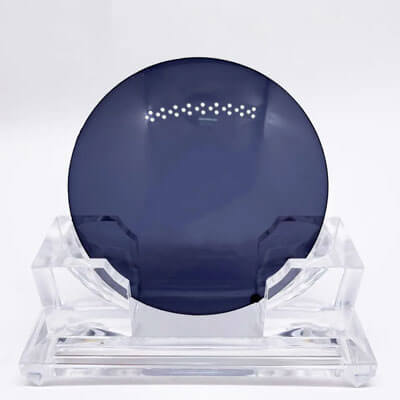
Trivex is a new optical lens material. It provides 100% UV protection and offers excellent optical clarity, ensuring a clear and distortion-free visual experience. It also stands out in terms of thinness and lightweight. Additionally, it has the highest impact resistance among all materials. As a result, many sunglass manufacturers use it to produce sport-specific lenses such as skiing goggles, and shooting lenses, as well as rimless frames or lenses with drilled holes.
But they are not widely available in lens types and color options. In addition, it costs much more because of the complex manufacturing technique.
TAC
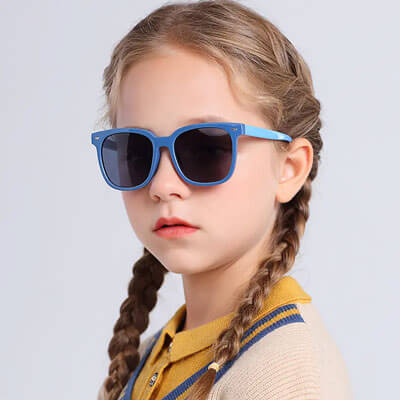
The TAC lenses are extremely thin, even when they are multi-layered. They provide excellent protection against up to 99% of harmful ultraviolet rays emitted by sunlight. Moreover, TAC lenses have an impressive polarization effect. Therefore, they are often used to making polarized sunglasses for cycling or driving, to avoid the glare reflected from sidewalks, roads, water, or snow.
However, its optical performance and impact resistance fall short of expectations.
Nylon
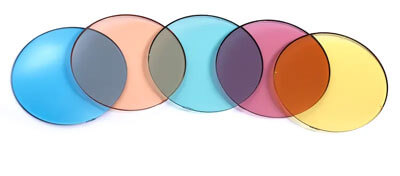
Nylon has good impact resistance, optical properties, and elasticity. It can be highly processed and flexibly applied to various designs. This versatility allows for a wide range of choices in frame styles and colors, catering to different fashion preferences and personal aesthetics.
For example, many manufacturers use it to make light-colored sunglasses, which have strong decorative effects and can be paired with fashion and different hairstyles or makeup looks. Therefore, it is one of the favorite sunglasses lenses of high-end sunglasses brands.
However, this material has low toughness and is prone to breakage.
CR-39
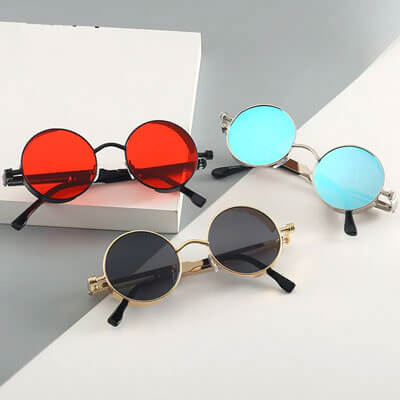
CR-39 stands for Columbia Resin 39. Its optical performance is second only to glass, and it has good impact resistance and abrasion resistance. It also has excellent color clarity and good ability to be easily tinted. This allows for the production of a wide range of lens colors and sunglasses types to suit different preferences and lighting conditions.
But CR-39 lenses are less durable and shatter-resistant, so they may not be ideal for certain high-impact activities or sports.
Polyurethane
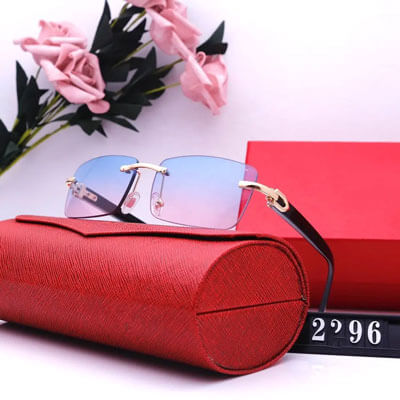
Polyurethane provides superior impact resistance and excellent optical clarity. It can be easily tinted and used to create sunglasses in various colors and shapes. Many eyewear manufacturers use it to produce rimless glasses with stylish designs. However, due to its high manufacturing process technology requirements, this material tends to be more expensive.
Acrylic

Acrylic lens is light and cheap, but the least durable and optically clear. It degenerates quickly. On top of that, when exposed to heat, the AC lens tends to warp. Also, it is easily damaged by chemicals and easily broken, so it is not favored by high-end brands.
4 considerations when choosing lens materials
When selecting lens materials for sunglasses, there are several factors you should consider.
UV protection
The main function of sunglasses is to filter UV rays. A qualified pair of sunglasses should effectively block harmful UV spectra, visible light spectra, and infrared spectra that can damage the eyes. Therefore, the UV value is a key indicator of sunglasses. The higher the UV value, the more UV rays it can block. This value needs to be clearly labeled on the product.
Transmitted ratio
The transmitted ratio refers to the proportion of light that passes through sunglasses. A high transmitted ratio means that sunglasses block less light, which may result in more ultraviolet rays entering the eyes. Based on the transmitted ratio from high to low, sunglasses can be classified as light-colored sunglasses, sunshades, and sunglasses for special purposes.
Additionally, an appropriate transmitted ratio can provide adequate brightness and contrast, allowing for clearer vision.
Good optical performance
Sunglasses are also optical products, and optical performance is an important indicator for measuring their quality. Those with substandard optical indicators may affect the visual health of consumers. The main indicators products include spherical power, astigmatism power, and prism power, among others.
Uniform and stable colors for colored lenses
Color uniformity is one of the important criteria for assessing the quality of tinted lenses. Lenses with color uniformity will not distort the surrounding environment’s colors. They can provide clear edges of objects, and help you effectively recognize different colored signals. In addition, good tinted lenses need to possess strong stability, ensuring that their color does not change due to variations in light quality or temperature.
As a leading sourcing company in China, Jingsourcing has helped 1000+ clients source and customize sunglasses made of different materials in China. We have cooperated with 200 manufacturers who are experienced in making sunglasses of various colors and styles.
For example, we have helped one client customize polarized cycling sunglasses. In addition to providing high UV protection, the clients also requested adjustable nose pads for a comfortable fit, as well as a sturdy frame. Based on the client’s requirements and budget, we selected the PC for the lenses and TR90, a thermoplastic and lightweight material, for the temple arms.
Then by specific processing, we made sunglasses with 100% UV 400 protection, and let the nose bracket be rotated and detached. Also, we strengthened the hinge to make it stronger. Moreover, we helped him customize the sunglass storage box and print his logo as required.
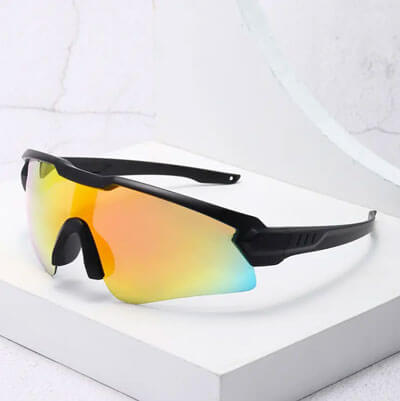
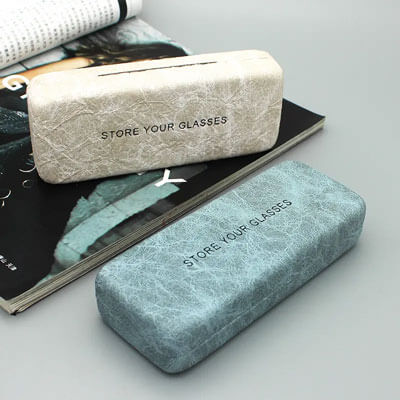

Leave A Comment